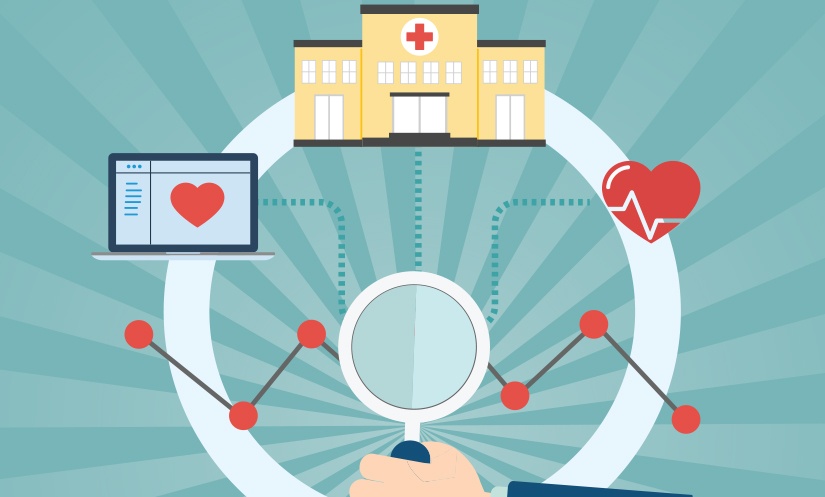
As your patients’ needs continue to evolve, so must your service delivery.
This is where Service Design comes in. Service Design is a practical and applied framework through which an organisation’s services are designed from scratch or its existing services are re-designed, all based on optimising the customer and patient experience – or, more specifically in healthcare, the patient experience.
In our previous blog, we explored the basic principles of Service Design consultation and discussed how it can benefit your organisation by optimising both your service offering and your interaction with your patients.
Now, let’s discuss how you can put this into practice by using the Service Design process in your organisation.
What is the Service Design Process?
Service Design involves organisations reviewing and revising their current service systems to deliver their medical services more effectively and holistically. It also helps employees manage the quality and consistency of service delivery, including patient interactions and experiences.
Service Design is essentially an iterative, 4-step process.
This means that, during every step of the way, Service Designers should test possible solutions to learn from the shortcomings of the previous iteration. The final design is then achieved by mapping out and prototyping the delivery so that everyone involved can have meaningful discussions and suggest improvements that are then implemented.
The benefits of the Service Design Process
Since Service Design is all about enhancing value and getting better outcomes, it offers the following benefits to your organisation:
- It gives your service a people-centric approach.
As one of the key features of Service Design is the involvement of patients, it allows you to rebuild around what your patients actually want and need, empowering you to deliver exceptional experiences.
- It accounts for modern patients in a new era.
Most service-based businesses today cater to tech-savvy customers and patients with varying expectations. As such, transparency, customisation and involvement have become key factors in improving overall service delivery for the patient of today and tomorrow.
- It allows your healthcare facility to stand out.
In a competitive market with so many similar offerings, you can differentiate your centre or clinic by offering a more patient-oriented design that ensures better outcomes and satisfaction levels.
How does the Service Design Process work?
There are four stages in the Service Design Process, each involving your team and your patients to come up with the ideal service solution.
Let’s break this down.
-
Exploration
During the first stage of exploration, your team must have a realistic view of what can and must be accomplished within the project’s limitations. To do this, you can start by observing and interviewing the clinicians, nurses and patients. Through the exploration phase, you’ll gain an empathetic understanding of the needs and behaviours of different users.
This is also where you analyse how the service currently works by using blueprints, mapping out critical areas, gaining insights about the system and visualising the patient journey.
Since stakeholder engagement is critical to the success of the project, it’s important to keep lines of communication open and accessible. Tools like visual sketches, storyboards and wireframes may be used to discuss and gather feedback at this stage.
-
Creation
During this stage, you will facilitate a workshop to convey insights discovered during the exploration phase in relation to the patients’ experience and journey.
Now is the time to brainstorm ideas and solutions, and discuss them with your staff. This stage also allows all participants to express their opinions, giving them a feeling of ownership and engagement.
All concepts should then be tested to make sure the proposed change is in line with the needs of all users.
-
Reflection
The reflection stage is the heart of the iterative Service Design process.
This is the part where you fully involve the patients. With a user-centric approach, you can discover some deeper insights that your staff were not previously aware of, which can be unfavourable for the patient experience.
If the prototype requires further exploration or creation, then the process goes back to the first and second stages before building another prototype based on the new results. Just remember - being realistic in terms of the scope of the project will help you focus on incremental improvements for the overall experience of your patients.
-
Implementation
After applying all the feedback to the prototype, the final design is implemented.
The experience and functionality are then evaluated from the patient’s perspective and the ongoing feedback can be used in the future when improvements are needed.
Approaching healthcare delivery challenges with a Service Design mindset can result in a significantly improved patient experience and outcomes of care.
That’s because an optimised, user-centric service involves allowing patients to be included - not only in the decision-making for their treatment, but also in the development of the care delivered. By including their opinions and feedback, you have an opportunity to build a more streamlined, effective and efficient service that’s better for everyone: patients, your team and your organisation, too.
Experience the benefits of the Service Design Process for yourself
After everything you’ve now learned about Service Design, you must be excited to begin planning!
That’s where NEXA can help you.
NEXA is an Australian company that delivers innovative solutions, such as Q-Flow, to empower both your patients and staff by taking advantage of digital technology. With NEXA, you can support and enable your team, deliver excellent healthcare service levels and thrive in today’s evolving medical landscape.
We can guide you towards better service delivery to optimise your processes and improve the patient experience.
Check out our customer solutions or talk to us today to find out how you can make your patient interactions matter.

